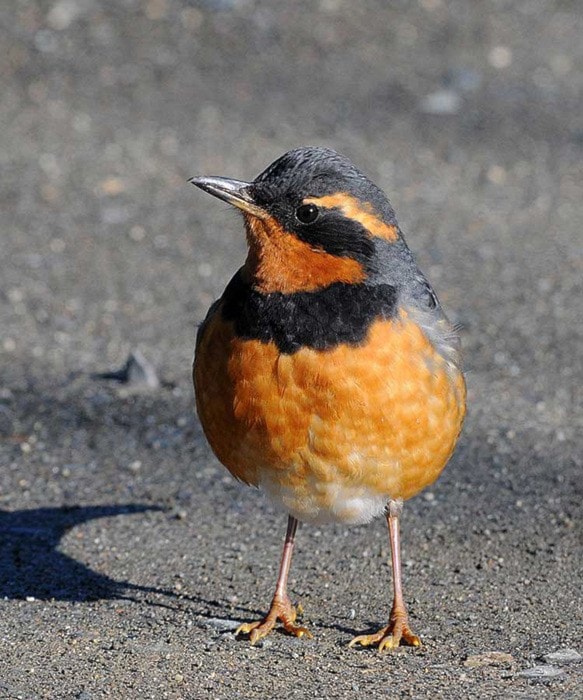It seems that Mother Nature is having a hard time deciding whether we are finished with winter or if she has a few more surprises up her sleeve.
In the last few weeks we have experienced four seasons, from gale-force winds to torrential rain and finally the snow we have been waiting for all winter, followed by rain again. It has been very confusing for us so I can only imagine the havoc it has created for the birds, wild animals and all the emerging vegetation.
Out on my daily walk, I was amazed at the number of birds that were busily trying to forage what little food they could find. I particularly noticed the number of American robins that were trying to listen for any movement of earthworms. Many tried to pull out frozen tidbits but seem to have more success scratching in the leaf debris under the trees and bushes.
Although many robins do migrate further south for the winter like so many other species large numbers prefer to be year-round residents. Amongst the robins I was delighted to notice another relative of the thrush family, the varied thrush does stay around for the winter just moving from higher altitudes to lower elevations.
Varied thrushes are similar in size to the North American robin but their colouration is strikingly different. The varied thrush is shy and quite elusive and spends much of its time scratching in the ground under vegetation digging up a variety of insects, fruits and berries.
These forest birds are found in a territory that extends from central Alaska, through western B.C. and the western states of the USA. They are rarely found east of the Rockies.
Varied thrush prefer mature coniferous forests but during cold spells they will shelter in hedge rows and brush within city limits; they will also visit the backyard feeder but will not linger in the open.
These handsome birds are uniquely patterned and very different from the robins. Their backs are a blue-grey colour not found in many other birds. The backs of their wings are a similar colour but they have distinct orange stripes on the back of their wings when folded.
The most remarkable feature is their bright orange throat, which has a black stripe dividing the breast from the head; the head is also black with a flame red-orange stripe above the eyes.
Unlike robins, the varied thrush are much more timid and tend to disappear when a predator is detected; robins will happily run along the ground until they find food. Robins will also look out for each other and sound a raucous alarm, especially when they are tending to babies.
Now that the days are getting longer the birds kick up their hormones with the extra daylight and can be heard vocalizing at dawn. Songbirds are a treat to hear as they have melodious tunes, especially robins.
In contrast, the varied thrush has a disjointed, quavering almost-eerie discordant tune.
I have noticed several other species that are definitely preparing to breed — northern flickers, red-winged blackbirds, eagles and many species of waterfowl.
As spring tries to arrive in earnest, look for unusual bird sightings. There have been several over the last few weeks, including a burrowing owl, and long-tailed ducks.
The next two months see the start of the great spring migration, this reminds us how important it is that we leave wildlife alone when they are feeding or raising their young. We are on the Pacific flyway that provides an abundance and variety of food for these migratory birds.
Please look out for wildlife on our roads and call MARS before intervening with injured wildlife. If you have the misfortune to hit a deer on the road, please try and remove the animal, if safe, to the side of the road to prevent eagles from scavenging a free meal, resulting in them being hit by vehicles.
Please come and support our Eagle Fest in Campbell River on Feb. 22. For more information, go to www.wingtips.org.
Sandy Fairfield is the educational co-ordinator for the Mountainaire Avian Rescue Society (MARS). The MARS column appears every second Thursday.
